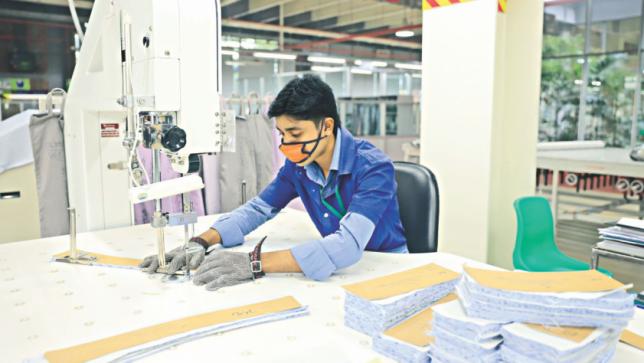Transformation at the speed of thought

Business leaders tend to be visionaries. They know where their businesses are going today, and they are supposed to know where they want to go tomorrow. Their ability to lead that journey of tomorrow is significantly important for the relevance of their business. In today's globalised business world, such journeys are often transformative and demand high speed. The same holds true for the business of apparel manufacturing in Bangladesh.
In fact, the apparel manufacturing industry is on the cusp of disruption. Bangladesh's export revenue from this sector has grown more than seven times over the last two decades, as per data from the World Bank. The export revenue from this industry contributes more than 80 percent of the national export revenue, and the revenue is equivalent to 12 percent of Bangladesh's GDP. Hence, it is important that the business leaders of this sector lead the transformation rather than being disrupted.
Automation has become a significant disruptive force in the apparel manufacturing sector. Until a few years ago, automation would occur through the installation of new machines in plants. Such automation was largely focused on improving productivity, quality and safety. The new generation of machines have in-built robots. Like skilled human workers, these machines are capable of performing more complex tasks and are flexible enough to perform different types of tasks based on the output requirements. As a result, the machines are driving change in the factory layout, deployment of workers and even production schedule.
Cheap labour has been a significant competitive advantage for the apparel manufacturing companies in Bangladesh. However, the cost of labour has been increasing consistently over the years due to increased wages. At the same time, technological advancements have made machines cheaper and better, resulting in a good part of the apparel manufacturing process becoming immune to the cost of labour.
Thus, such manufacturing processes can be set up anywhere in the world, preferably nearer to the market instead of in a faraway location like Bangladesh.
The second competitive advantage has been the favourable tax treatment facilitated by the importing countries. With the economic development of Bangladesh, such favourable treatments are also likely to go away, leaving apparel manufacturing companies to compete with other large manufacturers located in China and India. Also, many importing countries may start rewarding their domestic production facilities to boost the local economy, thus making business for Bangladeshi companies more difficult.
The third competitive advantage has been the flexibility in adapting to buyers' needs. For most of the apparel manufacturing companies in Bangladesh, buyers dictate a good number of manufacturing operations, including input materials, production processes and output designs. While that helped the companies grow rapidly, it created limited capability on value such as apparel design, manufacturing process definition and supply chain development. Unavailability of such capabilities is going to erode the competitive advantage of these apparel manufacturing companies.
Today, the question for business leaders is where do they want their businesses to go tomorrow? Unless they wish to be disrupted by others, they need to transform themselves with speed and agility. Rather than being followers, they need to lead and develop new competitive advantages.
The apparel manufacturing factories in Bangladesh have been installing new machines to increase capacity or replace existing machines. A good number of apparel manufacturing companies use some software application to track and monitor orders, but a small number of them use a standardised enterprise application. Choosing the right kind of standard enterprise applications and implementing them fully will be instrumental in increasing the efficiency of the manufacturing processes. This will also help these organisations develop control and visibility over their manufacturing processes.
The absence of comprehensive visibility into the production status is an area that may constrain scale and future growth. Most of these companies run a manual to semi-automatic reporting process that delivers reports to the executives using old data. The modern manufacturing process requires reporting based on the most recent data. Such reports help executives take better decisions faster and such decisions help organisations stay nimble and agile. Agility and nimbleness are no longer optional characteristics for the leading organisations operating in the global arena. Rather, they will be vital to survival in the near future.
The most important element of staying relevant in the market is to have a strategy for value creation. The fourth industrial revolution is changing the landscape of value creation in a significant way. Value is being generated by digitalising existing products and services, creating new products and services on the digital platform, and integrating the existing value chains digitally. Apparel manufacturing companies need to embrace all of these changes to retain their position in the global market. Embarking on the digital transformation journey will be key to a successful future.
Finally, the government and national agencies should also focus on developing the competitive advantage of this sector. Given the high reliance on a single sector for export revenue, stakeholders should assist and govern these companies to enable them to remain successful in the global market. The stakeholders should not shy away from recommending difficult measures instead of making populist choices. The stakeholders should also have a plan to manage the risk of stagnating export revenue in case the apparel manufacturing sector fails to grow or, in a worse situation, declines in the coming years.
The apparel manufacturing sector has gained significant economic importance for the country. The technology-led transformation of this sector will help it develop a new competitive advantage both for itself as well as the nation.
